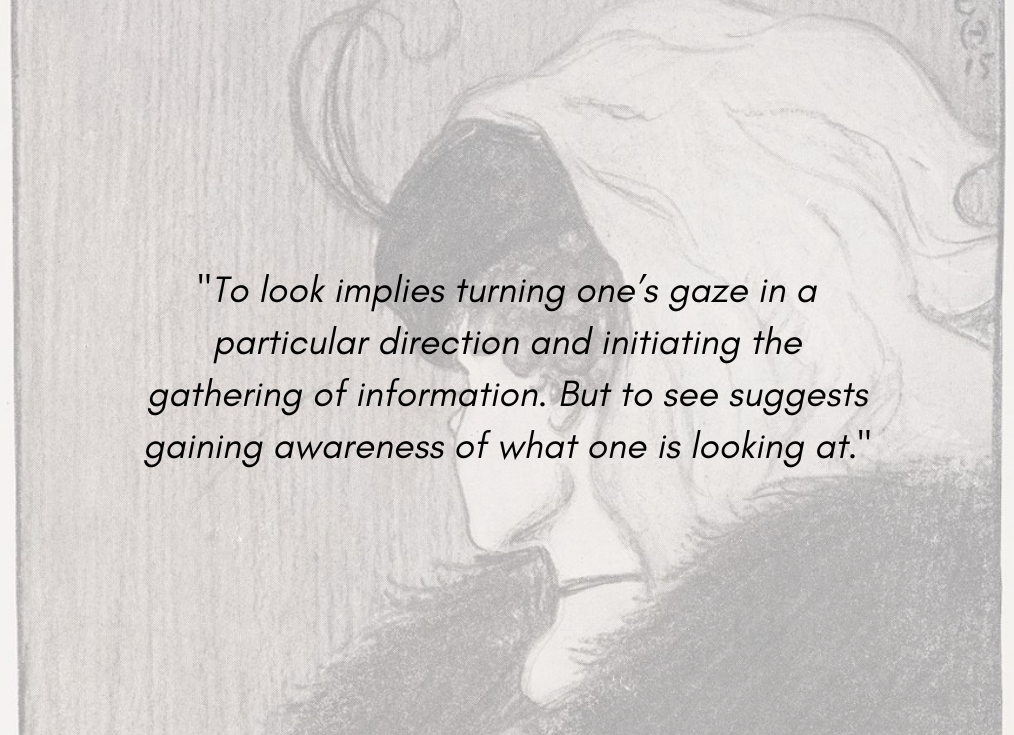To Look and To See

June 16, 2023 / 27 Sivan 5783
How is it that two people can look at the same thing but, in fact, see two different things?
There are several famous optical illusions that depending on the observer, two different things might be seen in the same single picture. One of the most famous examples of this phenomenon was first published in 1915 in a humor magazine titled “My Wife and My Mother-in-Law.” Without knowing that there are two distinct pictures embedded in the drawing, [spoiler alert] viewers gravitate to either the younger woman looking away over her right shoulder or to the older woman looking down to the left. The fact that the drawing remains the same but that different observers see two totally different, even contradictory, pictures is exactly the point of the mind game.
In this week’s Torah portion, Shelach, we read the story of the twelve spies whom Moses sends “to scout the land of Canaan.” (Numbers 13:2) We also read in this same verse that the scouts are representatives “from each of their ancestral tribes” making sure that this collective group fairly represented a cross-section of the people.
…
However, when the spies return, notwithstanding their beautiful bounty of fruits described as coming from a land “flowing with milk and honey” (13:27), ten scouts describe the residents of the land as Nephilim (“giants”), impossible to conquer, versus two scouts, Joshua and Caleb, who recommend the Israelites proceed into the land.
The Torah tells us that the people panic, even sharing the hysteria that some suggested it better that they would have died in Egypt (14:2). It is because of this lack of faith in everything that Gd had done to get this freed nation to the verge of the promised land, that Gd decides that this generation will never enter this land. Instead, Gd punishes the people one year for every day the scouts were in the land (14:34). Forty years, this generation will wander so that the next generation will be blessed with Gd’s promise to Abraham, Isaac, and Jacob.
Were the ten skeptical and fearful spies wrong in what they observed? Probably not. Did Joshua and Caleb have special powers to see what the others did not? Probably not again. However, what the research on optical illusions has provided us over the years is the knowledge that what we “see” is not always what we “look” at.
To look implies turning one’s gaze in a particular direction and initiating the gathering of information. But to see suggests gaining awareness of what one is looking at.
Only Joshua and Caleb were able to “see” the opportunity, the blessing, and the future that Gd had promised them. The other scouts could only share what they looked at, which, although not wrong, showed their lack of readiness to receive their promised land.
So too, must we be ready to “see.” We are living in a time when antisemitism is at its highest in the modern era. We are living during the most polarizing times, pitting one Jew against another. And we have a disproportionately aging community relative to today’s Jewish birth rates. So how do we maintain community in an us-them world? We do it through building relationships. We do it by acknowledging that we can be looking at the same thing but seeing different things at the same time. We do it because we need to see when we look.
This week’s Torah portion of Shelach is all about what we see and sometimes don’t see. May we all find the time this weekend to reach out to another, maybe even someone with whom we haven’t seen eye-to-eye, and consider that both of us might be looking at the same picture but seeing different things… and that’s OK. Because we are…
Shabbat Shalom,

